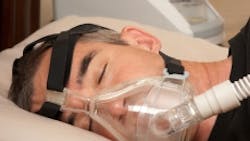FDA Safety Communication: Philips Respironics ventilators, BiPAP and CPAP Machines
The U.S. Food and Drug Administration (FDA) issued a safety communication alerting people who use Philips Respironics ventilators, BiPAP and CPAP machines and their healthcare providers that Philips Respironics has recalled certain devices due to potential health risks.
The polyester-based polyurethane (PE-PUR) sound abatement foam, which is used to reduce sound and vibration in these affected devices, may break down and potentially enter the device’s air pathway. If this occurs, black debris from the foam or certain chemicals released into the device’s air pathway may be inhaled or swallowed by the person using the device.
If you use one of these affected devices, talk to your healthcare provider to decide on a suitable treatment for your condition and follow the recommendations listed below.
Philips Respironics is recalling the following affected devices manufactured between 2009 and April 26, 2021. For details, see Philips’ Respironics recall notification.
These devices are used to provide breathing assistance. Specifically:
- A bilevel positive airway pressure (also known as BiPAP, BiLevel PAP, or BPAP) machine pumps air under pressure into the airway of the lungs. BiPAP machines have a higher pressure when you breathe in and lower pressure when you breathe out.
- A continuous positive airway pressure (CPAP) machine keeps your airway open by providing a continuous stream of air through a mask. CPAP machines are devices prescribed to people with obstructive sleep apnea to keep their airways open during sleep.
- A continuous ventilator device is intended to mechanically control or assist patient breathing by delivering a predetermined percentage of oxygen in the breathing gas.
Polyester-based polyurethane (PE-PUR) is a sound abatement foam used to reduce sound and vibration in these devices and other medical equipment. The PE-PUR foam in the affected Philips Respironics CPAP, BiPAP, and ventilator devices may:
- Break down (degrade) into particles which may enter the device’s air pathway and be inhaled or swallowed by the user
- Release certain chemicals into the device’s air pathway, which may be inhaled
These issues can result in serious injury, which can be life-threatening, cause permanent impairment, and require medical intervention to prevent permanent damage.
To date, Philips Respironics has received several complaints about the presence of black debris/particles within the device’s air pathway. Philips Respironics also has received reports of headache, upper airway irritation, cough, chest pressure, and sinus infection, which may be related to this issue, though the cause of the symptoms cannot be definitively linked.
The potential risks of particulate exposure include irritation to the skin, eye, and respiratory tract, inflammatory response, headache, asthma, and toxic or carcinogenic effects to organs, such as kidneys and liver.
The potential risks of exposure to chemicals released into the device’s air pathway from the PE-PUR foam include headache; dizziness; irritation in the eyes, nose, respiratory tract, and skin; hypersensitivity; nausea/vomiting; and toxic and carcinogenic effects.
The foam degradation may be exacerbated by high heat and high humidity environments, and by use of unapproved cleaning methods, such as ozone.
